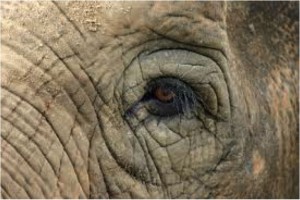Oftentimes when working with communities, I retell the tale of the blind men who come across an elephant. One clasps the trunk and wonders, “Ah! But this beast is long and snakelike!” Another places his hand on a haunch: “No, it isn’t! It is coarse and broad.” “You’re both wrong,” says a third, who stands by a tusk. “It is smooth, hard and cool.”
The men argue. They are each correct in their experience, yet left to their own perceptions they are unable to discern the true nature of the beast.
I like to tell this story for two reasons. One, people like stories. They remind us “about who we are, why we are, where we come from and what might be possible,” as actor Alan Rickman once said.
The second reason is that the story beautifully illustrates why inviting in people with different perspectives is central to community building. Left to our own devices, we each create an understanding of how things work, what’s wrong and what will fix a particular challenge. And whether it’s a lack of self-awareness of our biases, a lack of trust, and/or a desire to not be seen as “uncooperative,” we are often reluctant to talk about our differences. Yet it’s precisely when we pool our perceptions and surface our assumptions that we can begin to build a more complex and accurate understanding.
“We see more when there are more of us seeing.”
So says Margaret Wheatley in her new book, Who Do We Choose To Be. Wheatley goes on to describe how important it is to regularly incorporate participative processes, listening skills, conflict resolution and problem-solving skills into our work.
Here are two practices I use that can surface differing perspectives, as well as help us to create a deeper understanding of our work.
The 4 Voices of Collaborative Innovation
This wonderful tool used in CoCreative Consulting’s methodology identifies four “voices” of collaboration: the voice of expertise, of experience, of design and of intent.
How I use it: After posting signs for each “voice” on a different wall, I ask people two rounds of questions:
- Stand by the voice where you are most comfortable. What’s one strength/skill you bring to that area?
- Now stand by the voice where are you least comfortable. What helps you get more comfortable in that area?
After each round, I ask participants to reflect using the 1-2-4-ALL tool from Liberating Structures.
Why I like it: 4 Voices allows people to see their strengths and differences as individuals and as a group, and asserts that the variety makes a group stronger. It also allows people to identify ways to support one another in collaborative endeavors.
Described in the seminal book by Juanita Brown and David Isaacs, World Cafes are based on the understanding that conversation is the natural way we humans think together, be it in our personal, professional or community lives.
How I use it: At its core, a World Café is a round of three conversations, in which a table host stays through each round as participants move to new tables. Central to the practice is the development of questions to ignite participants’ best thinking and connection to others. A final question is designed to provoke participant reflection. For instance, I once posed to a group of college access folks, “What new insights are you having today into the potential power of deepening alliances between high school counselors and college advisors?”
Why I like it: I’ve led and participated in World Cafe conversations for over 20 years, and I am never disappointed. Every café is different, yet each one results in a greater understanding of the diversity of experiences and mindsets within a group, and a deepening of appreciation for all that connects us to one another.
I’d love to hear about the practices you use to ensure that we welcome the elephant into the room.

